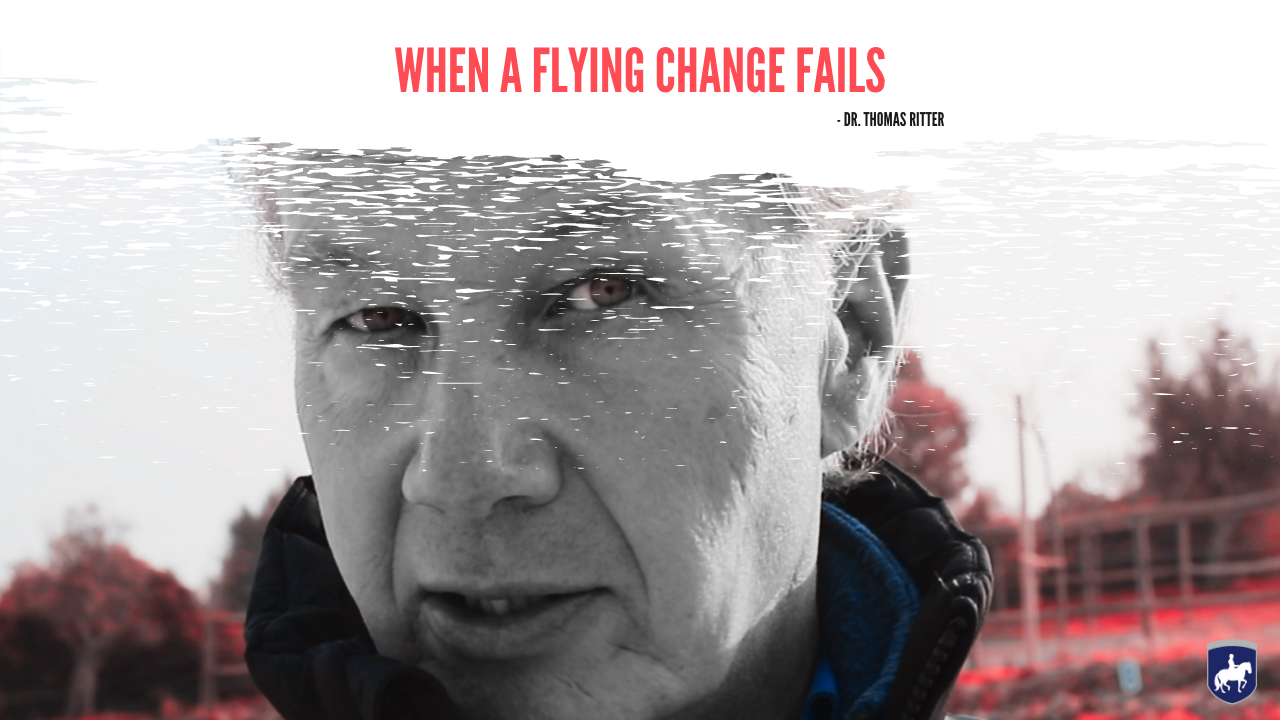When a flying change fails, the reason is usually that the horse became crooked and/or fell on the forehand. This results in a loss of the connection between the inside hind leg, the ground, the rider’s weight, and the reins which prevents the half halts from going through. That’s why things generally don’t improve if you keep cantering and keep repeating the aids for the flying changes.
It saves much time, sweat, and aggravation for both horse and rider, if you interrupt what you’re doing, bring the horse back to the trot or walk, or even to the halt, straighten and balance the horse, check his body for stiff, braced areas, remove the muscle blockages, and re-explain the biomechanics of the flying change (i.e. shift the weight, change the bend, move the pelvis).
As the horse is developing his conscious competence, he will often need time to think and to plan his next move so that he can perform the task deliberately. As he moves from conscious competence to unconscious competence, he can do flying changes anywhere, any time, with less and less preparation.
The same thing goes for the rider, too. When we are first learning the flying changes, it helps us to go over the mechanics of the aids in slow motion so that we can think and plan carefully. As the movement patterns of the seat and aids become ingrained in our bodies, we can also ride flying changes with increasing ease and less preparation.
When a change didn’t go through or didn’t happen at all, take a break at the walk and ask yourself the following questions:
Which body part of the horse is not supple enough?
Can he move his hips easily in both directions?
Can he change his bend easily in any gait, at any time?
Is his throat latch and poll supple in all directions?
Can he easily shift the weight from one side to the other?
Did you over collect him so that his hind legs got cramped and were unable to move freely?
Did you let him fall apart?
Was the tempo too fast or too slow?
Did you let him get crooked before the change or when you were asking for the change?
Did you throw him off balance with your seat?
When you have a working hypothesis, pick up the reins and try again. Observe the result, evaluate, tweak the seat/aids/exercise approach or the working hypothesis, and repeat the cycle.
Let us guide you and let 2022 be the year you achieve the Flying Changes WITH your horse!
We have a 22-week guided course, all online with gymnastic exercises, theory lessons, even lessons to develop the RIDER’s suppleness and coordination. Complete with support and feedback in a Facebook Group and biweekly live Q&As with us so you are never alone in this process. You have support every step of the way!
And we would like to invite you to join us!
This course begins on Monday, January 10th with our Orientation Week where we help set you up for success with accountability pods, a workbook, guidelines for a successful approach, etc. and then the first module with the first horse exercises and riding theory lessons begins on Monday, January 17th.
Enrollment will close on Monday, January 17th but the sooner you begin, the more time you have to get yourself set up for success before the coursework proper begins.
Not sure? Try it out for up to 30 days and if you hate the course, let us know and we will give you your full enrollment fee back. No problem! (But we are pretty sure you will love it!!)
So click on this link and grab your spot in the 2022 Training the Flying Changes course with Thomas and Shana Ritter - https://courses.artisticdressage.com/training-the-flying-changes-course
See you there!


